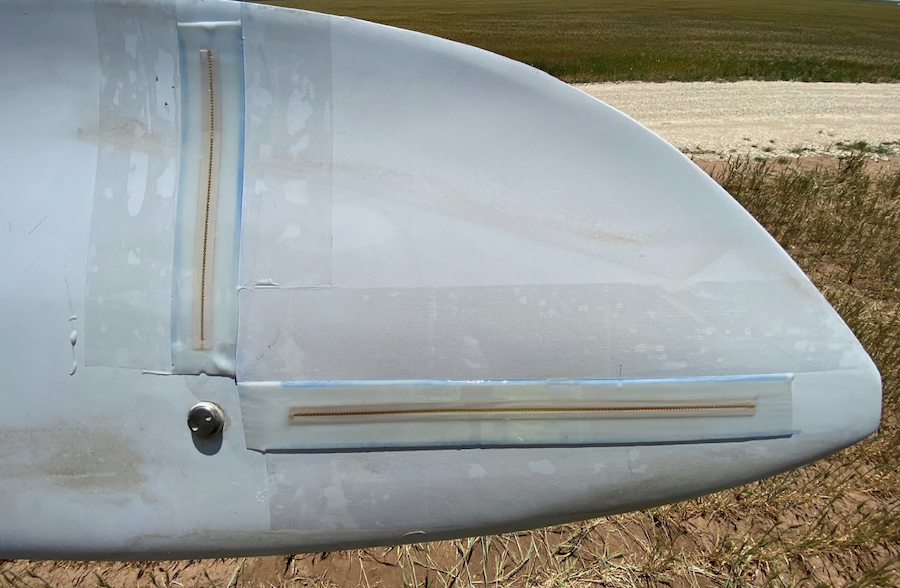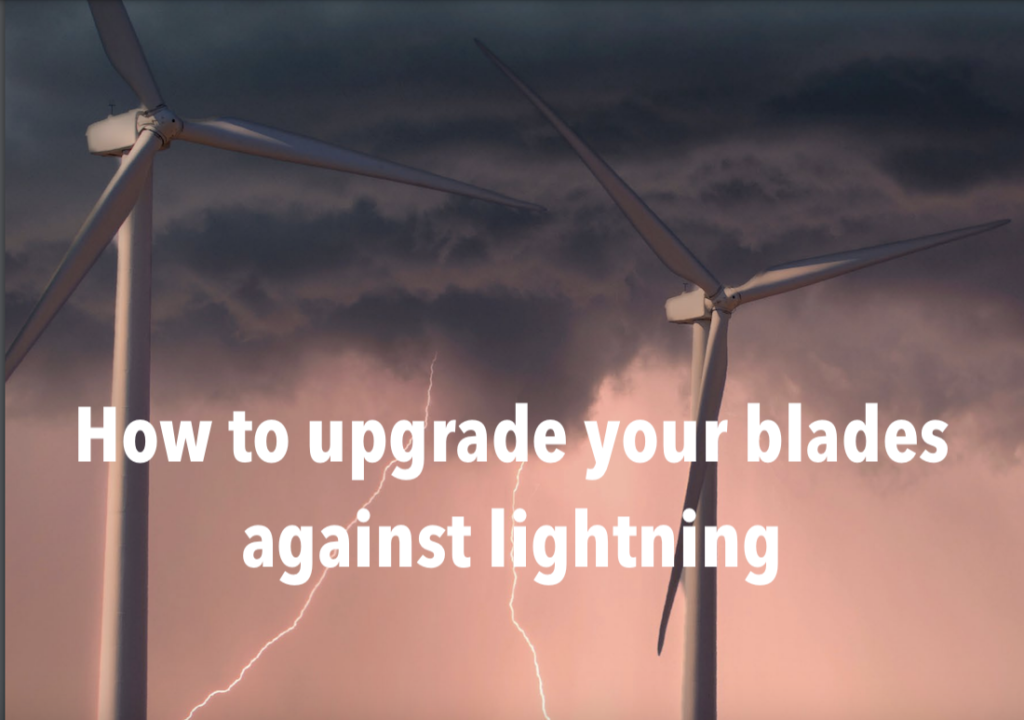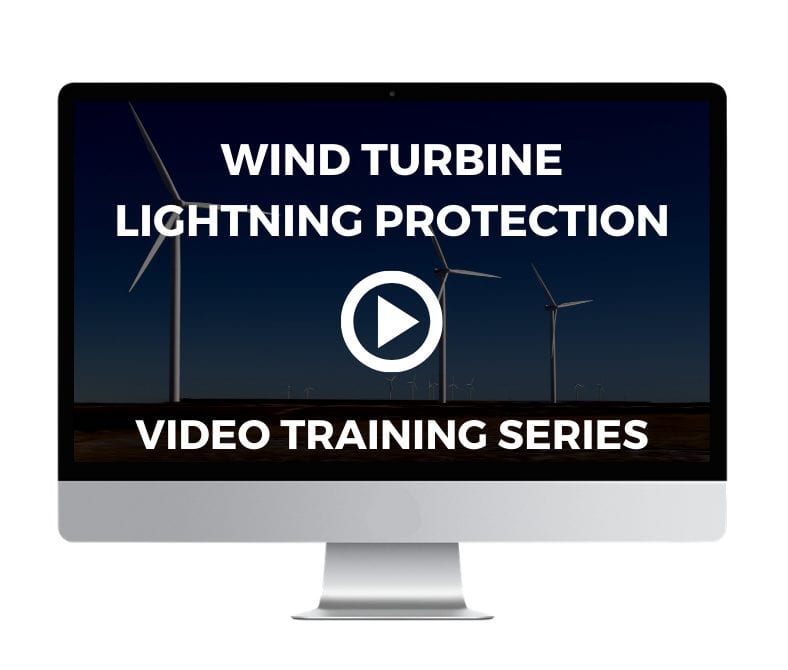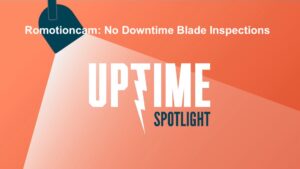This is a reprint of an article from PES Wind magazine that was originally published in June 2024.
Wind turbine operators are facing a growing challenge as turbine blades increase in size: more frequent and severe lightning damage, particularly in lightning-prone regions like the US Midwest. GE Vernova’s 2.X-116 and 2.X-127 turbine blades have proven to be especially vulnerable, with their lightning protection systems (LPS) struggling to safely capture and divert lightning strikes to ground. The consequences are significant: repeated blade punctures, expensive repairs, and prolonged turbine downtime.
The GE Vernova blade problems are not born from design issues, but rather a complex mix of three elements. First, longer turbine blades are generally certified through similarity with older, shorter blades whose lightning risk is much lower. Next, the US Midwest generates massive thunderstorms that produce hail, tornadoes, and thousands of complex lightning strikes. Finally, the 2019 IEC lightning standard does not address the types of turbine-damaging strikes that occur in the US Midwest.
I want to preface this article with a little background on my education, work, and experience with GE. My first career after college was with GE AstroSpace, designing spacecraft that connected the world together with data, weather forecasts, and GPS location information.
In addition, I worked on the color cameras that captured images from the Space Shuttle high above the Earth. Early in my tenure at GE AstroSpace, I was assigned to the company’s elite Edison Engineering Program, and those teachings guide my approach to solving engineering problems, including the one in this article.
Blade LPS fail too frequently
GE Vernova’s lightning issues became clear when I took a two-week long tour of wind farms in west Texas and western Oklahoma, many of which use the GE 2.X116 and -127 turbines. In February, massive thunderstorms attacked this region and a large array of eologix-ping lightning sensors sent strike alert emails.
I brought along my newest high magnification lens for this two-week trip so I could photograph blades from the county roads. Some of the photos in this article are from that journey.

The GE 2.X-116 and 127 have a basic lightning protection system, consisting of a single receptor at the tip on both the pressure and suction sides of the blade. This system has been validated through the IEC 61400-24 standard to LPL Level 1. The intent of the LPS is to collect all lightning strikes at the receptors and then conduct the energy through an aluminum down conductor inside the blade, through to the hub, nacelle, tower and eventually to Earth. The LPS system is simple and has been reasonably effective through the years.
However, based on careful data collection, observations, and candid conversations with operators in the US, that’s not what is happening in the field anymore.
GE’s US lightning problem explained
So, what is happening in Texas and Oklahoma? In simple terms, lightning is missing the receptor and puncturing the blade structure. I saw some blades with multiple holes from lightning strikes. These holes are easily detected because the damage peels back the outer strands of the laminate, leaving a streak of black on an otherwise white blade. Internally, the lightning will damage the blade structure to reach the insulated down conductor cable.
These blade punctures tend to be several meters from the receptors. Most of the damage I have inspected has been 3 to 5 meters inboard of the receptors, although some operators have reported damage further down the blade. Anecdotally, this would indicate that the LPS is effective at picking up strikes within about 2 meters of the receptors.
Expensive problem, but very solvable
Several operators have decided not to repair the puncture holes if the main load- bearing blade structure is not damaged. Others have shut down the turbines until the damage is repaired. My 25-plus years of lightning testing and experience says that leaving the damage unrepaired greatly increases the likelihood of major structural damage during the next strike. In Oklahoma and Texas, there will always be another lightning strike, and in 2024, as weather patterns change, larger strikes are coming more frequently.
Now for the bad news. Some of the lightning strikes that have missed the LPS have created significant damage, including separating several meters of the blade tip from the turbine. This type of strike may be relatively rare, but it necessitates that the turbine be shut down for months for investigations, root cause analyses, insurance claims, and finally, new blades being installed.
Now let’s consider how ‘rare’ plays out for operators. When operators suspect they have a lightning problem, they’re told lightning is an ‘act of God’ and they should contact their insurance provider.

Which kinds of lightning strikes evade the LPS system and create large amounts of damage? Remarkably little is known about these strikes because they are difficult to detect with lightning location services.
What lightning location services miss
Lightning location services use a series of antennas mounted at ground level to detect the electromagnetic pulses produced by the rapidly changing currents in a typical lightning strike.
However, lightning location service data for the most damaging strikes, in my experience, either does not record a strike or records a cloud-to-cloud strike in the general vicinity of the turbine. Both cases are troubling, but the lack of a large electromagnetic pulse also indicates the type of lightning currents penetrating the blades.
Postmortem damage reviews suggest the most likely culprit: low-amplitude, long- duration currents from an upward lightning event or a low-amplitude downward strike. The blades show a tremendous amount of heat damage near the lightning attachment point. As Sherlock Holmes, actually, Sir Arthur Conan Doyle, once said, ‘When you have eliminated the impossible, whatever remains, however improbable, must be the truth’.
Long-duration currents have long been a thorn in the side of fiberglass wind turbine blades. Fiberglass is a terrible conductor of heat and is very difficult to ignite with short duration, high current amplitude lightning strikes. A short duration 50kA peak current strike will create explosive damage to the structure but it will very rarely ignite it.
However, long-duration currents, like those produced by an arc welder, accrue significant amounts of heat in the blade structure that can ignite the resin system, leaving charred remnants of fiberglass fiber in its wake.
Lightning protection systems protect blades by reacting to the voltage produced by the clouds or an approaching lightning channel. When the voltage at the receptors becomes high enough, it triggers a lightning leader from the receptors that connects the receptors to the lightning threat from above.
However, the long-duration current strikes can be preceded by a lower-voltage potentials during the initial phases of the strike. These low-intensity lightning events can evade the receptors and hit the down conductor.
Photos of such strikes are documented in the published papers ‘Lightning attachment to wind turbines in central Kansas: Video observations, correlation with the NLDN and in-situ peak current measurements’ and ‘Lightning Attachment to Wind Turbines in Central Kansas: Video, Observations, Correlation with the NLDN and in-situ Peak Current Measurements in 2013’ by Nicholas Wilson, et al.
The turbines in these papers had a maximum tip height of 125m, which is approaching the tip height of the GE 2.X-116 and -127 machines. Lightning researchers E. Bazelyan and Yu. Razier also have unique insights into unusual strikes to the sides of tall towers. The key takeaway from their research is that lightning comes in all forms, high peak current, low peak current, high potential, low potential, and some strikes have a massive amount of damaging long-duration currents.
The fact that turbine blades are usually rotating adds another layer of complexity. The blades may not be pointing straight up toward the clouds where the strike originates; in fact, they are likely to be nearly parallel to the clouds when the strike occurs. A horizontal blade puts the down conductor on an even plane with the blade receptors, increasing the likelihood of a blade puncture.
So, the likely culprit for the worst blade damage is a lower voltage potential strike that discharges a significant amount of long-duration current. What to do about it?
No solution? Not true
The IEC 61400-24 specification should be updated so its laboratory tests represent the most-damaging strikes today. The latest revision, from 2019, focuses on maximums derived from historical lightning strike data to tall metal towers. Although this data is reliable, it is less applicable because turbine tip heights have significantly increased, as has storm intensity.
In particular, the high voltage tests need to increase the distance between the blade and the ground plane from 1.5 to 2m to several meters. The test voltage should have a slower rise time, with the time-to-peak increased from 250 microseconds to at least 1,000 microseconds, so as to align laboratory results more accurately with real-world puncture locations.
More immediately, for operators with GE blades already in service, there is a quick solution to prevent blade damage: StrikeTape from Weather Guard Lightning Tech. It is a segmented lightning diverter designed for the harsh environment where wind turbine blades operate, and it’s proven effective.
Proven results
StrikeTape is bonded to the blade surface near the existing blade receptors and directs strikes to the existing LPS. It initiates a lightning leader much earlier, and under lower voltage conditions, than the LPS by itself, and vastly improves the LPS ability to safely direct the lightning to ground, as intended.
Installation of StrikeTape on GE turbines requires little technician training and it can be installed in as little as 20 minutes by a tech on-blade.
Wind operators are choosing to stock StrikeTape in their warehouse as kits to be deployed when technicians are on-blade, or on a larger scale during leading edge erosion and blade repair campaigns.
Currently applied to more than 15,000 blades of all types, world-wide, StrikeTape is being deployed in Texas and Oklahoma to stop lightning damage to GE 2.X-116 and -127 blades.
Wind turbine operators facing lightning damage issues, particularly those with GE 2.X-116 and -127 blades, should strongly consider implementing StrikeTape as a coste-ffective and efficient LPS upgrade solution. By proactively addressing this problem, operators can minimize downtime, reduce maintenance costs, and ensure the long-term reliability of their wind turbines.

You can connect with the Uptime Wind Energy Podcast hosts at an upcoming trade show or at Uptime@wglightning.com.
This article was originally published as an exclusive article in PES Wind issue 2, 2024






